How Friedensau overcame difficult times
24. Jan. 2024 / Campus Living / Events
How Friedensau overcame difficult times
As a prelude to the anniversary events, a reading with church historian and Friedensau expert Dr. Johannes Hartlapp took place in the university library on January 14, 2024. He spoke about the decade "1940s and 1950s" in Friedensau's history. A period in which two political systems and the end of the war were experienced, with consequences for the teaching at the preacher's seminary and the existence of today's "Friedensau Institutions". Nevertheless, Friedensau was preserved and blessed.
The lecture had been eagerly awaited. A large number of interested people from Friedensau and the surrounding towns had gathered to listen to the presentation. Journalist Stephen Zechendorf – who writes for the Burger Volksstimme – reported on this event in a major article on January 16, 2024. Thanks to the kind permission of the author and the publisher of Burger Volksstimme, the article is quoted here. Minor inaccuracies have been corrected and mostly indicated with square brackets (quote):
Friedensau has already faced the end several times
How the Seventh-day Adventist preacher's seminary survived National Socialism and how the free church emerged from the land reform.
By Stephen Zechendorf 16.01.2024, 21:11
Friedensau. Friedensau is celebrating its 125th anniversary this year. But there were times when the preacher's seminary was on the brink of collapse. An advertisement in the Deutsche Allgemeine Zeitung (DAZ) in 1933 shows that it could have been over after just three decades: "A state educational home with all its inventory and livestock" was up for sale. How was it saved?
"Large buildings are available to accommodate 300 to 500 pupils. There are also nice apartments for civil servants. Own lighting system, waterworks as well as bakery, carpentry, gardening, steam laundry, soap factory, disinfection house, gardening, agriculture and also own hunting," it said. 600,000 Reichsmark was asked for the 570 acres of land located "in the heart of Germany".
"This is unmistakably Friedensau," says Johannes Hartlapp, church historian at Friedensau Adventist University. "No decade in Friedensau's history was as tense as the period between 1940 and 1950," said Hartlapp on Sunday during a lecture in the university library: "It was a question of to be or not to be."
Ban in the 1930s
Things had already been turbulent at the "Klappermühle", which Ludwig Richard Conradi bought for 50,000 Mark in 1899 and transferred a year later to the German Association for Health Care in Friedensau, Jerichow District I (DeVauGe) [founded in 1900] to establish an Adventist preacher's seminary.
At the end of 1933, the Seventh-day Adventists were banned, reports Johannes Hartlapp: "In Friedensau, the door to the chapel was sealed and all German pupils were sent home. Ten days later, however, the Gestapo withdrew the ban just as abruptly. The reasons are almost completely unknown."
In response, the then church leadership of the Adventist Church in Germany wrote in relation to Friedensau: "We have sent an appeal to all our church members for the referendum and the Reichstag election to vote in favor of this decision. In Friedensau, which is an Adventist colony, 100% voted yes." Hartlapp qualifies: there was also opposition at the time.
According to Hartlapp, the church leadership's fear resulted in "fatal mistakes from today's perspective": firstly, the ad in question was placed. "It was later said that they just wanted to test it out," says Hartlapp. There was no indication as to whether there were any interested parties at the time.
The church leadership also decided to discontinue theological training in Friedensau due to the political situation. Only commercial and housekeeping courses remained. Although there was also a new course for [book] evangelists, the number of students decreased more and more. In 1935/36 there were only 47 [...] The reintroduction of general military service in 1935 also made the five-year pastor training course seem almost impossible. Without [the] pastor [training], Friedensau would only have been a postcard motif, according to Hartlapp.
A "bomb-proof" place
Summer 1939: Many teachers had been called up. The buildings of the missionary school had already been used to house Sudeten Germans since 1938. They were rented by the Nationalsozialistische Volkswohlfahrt [National Socialist People's Welfare Organization] (NSV).
Once again, dark clouds gathered over Friedensau: The Reichsministerium für Wissenschaft, Erziehung und Volksbildung [Reich Ministry of Science, Education and National Education] deliberated on the eight remaining mission schools and came to the conclusion that they would be ordered to close at Easter 1940. But: "Instead, nothing happened in Friedensau," reports Johannes Hartlapp: "Easter passed without any reaction."
But other desires for Friedensau arose. In May 1943, the government announced the takeover of Friedensau to establish a state residential school. There were concrete plans for all the buildings. However, there was talk of renting them because the Minister of Finance had no money to buy them. However, the Deutsche Verein für Gesundheitspflege [DeVauGe; German Association for Health Care], as the owner, was not prepared to hand over Friedensau. They argued that Friedensau was of great importance beyond Germany. The final sentence in the letter from the DeVauGe may have had an effect: "I am convinced that the Führer would not take Friedensau away from us if everything was reported to him in detail," it says.
The number of pupils only slowly increased again. It was not until 1942 that the school management counted more than 100 pupils. "Probably because Friedensau was considered bomb-proof at the time," speculates historian Hartlapp.
In August 1943, Wehrmacht doctors arrived at the door. "Among them, Oberstabsarzt Dr. Nauwerk," Johannes Hartlapp opens the next chapter of the Friedensau chronicle: The Wehrmacht wanted to seize Friedensau. On August 22, 1943, teaching operations were discontinued. "The best thing that could have happened," says Hartlapp. Because a confiscation was neither a takeover nor a sale. The old legal relationships remained in place. Friedensau became a military hospital.
Sect becomes a church
End of the war: On May 5, 1945, the Soviet soldiers entered the village at the exact time of a church service. The song "I pray to the power of love" was then deliberately sung, as the music was written by a Russian composer. A Russian officer came in and simply said: "Carry on!" They had been lucky enough to accommodate families from Latvia and Lithuania who understood Russian since 1941. Friedensau was confiscated. "There were also assaults and rapes in Friedensau," says Hartlapp: "That was later a taboo subject."
The military hospital was largely dissolved in just 14 days and the houses were empty. The soldiers preferred to settle in huts in the [surrounding] woods with the inventory from Friedensau.
New danger through land reform
With the subsequent land reform [1945/46], new danger loomed: owners of more than 100 hectares of land were expropriated, unless it was church property. The Adventist Church, which was considered a sect in Germany [at the time], had only applied for such recognition in Bavaria and received permission from Prince Regent Luitpold as a private church society. The paper was worth nothing, as the Minister President of Saxony-Anhalt, Dr. Erhard Hübener, knew. Nevertheless, it was enough for him to recognize the church institution in 1946. Hübener believed that Friedensau's continued existence as a church institution was important.
It was also thanks to him that teaching could be resumed in Friedensau. In November 1946, Hübener responded to an application by stating that he had no objections. There were also no concerns regarding the curriculum and staff; nothing stood in the way of reopening on July 1, 1947. Even a Soviet doctor was powerless, who declared on June 27, 1947 that Friedensau should become a military hospital.
As late as the 1950s, there were still attempts by GDR government bodies to exert influence on Friedensau. However, Hübener's approval by the Soviet Military Administration [SMAD] of Friedensau as the first church training center in the Soviet-occupied zone proved to be a kind of "seal of inviolability", says Hartlapp: "If there was to be a monument in Friedensau, it would be for Erhard Hübener."
Stephen Zechendorf, Burger Volksstimme, January 16, 2024, with the kind permission of the author and the Burger Volksstimme publishing house. Editing: Andrea Cramer.
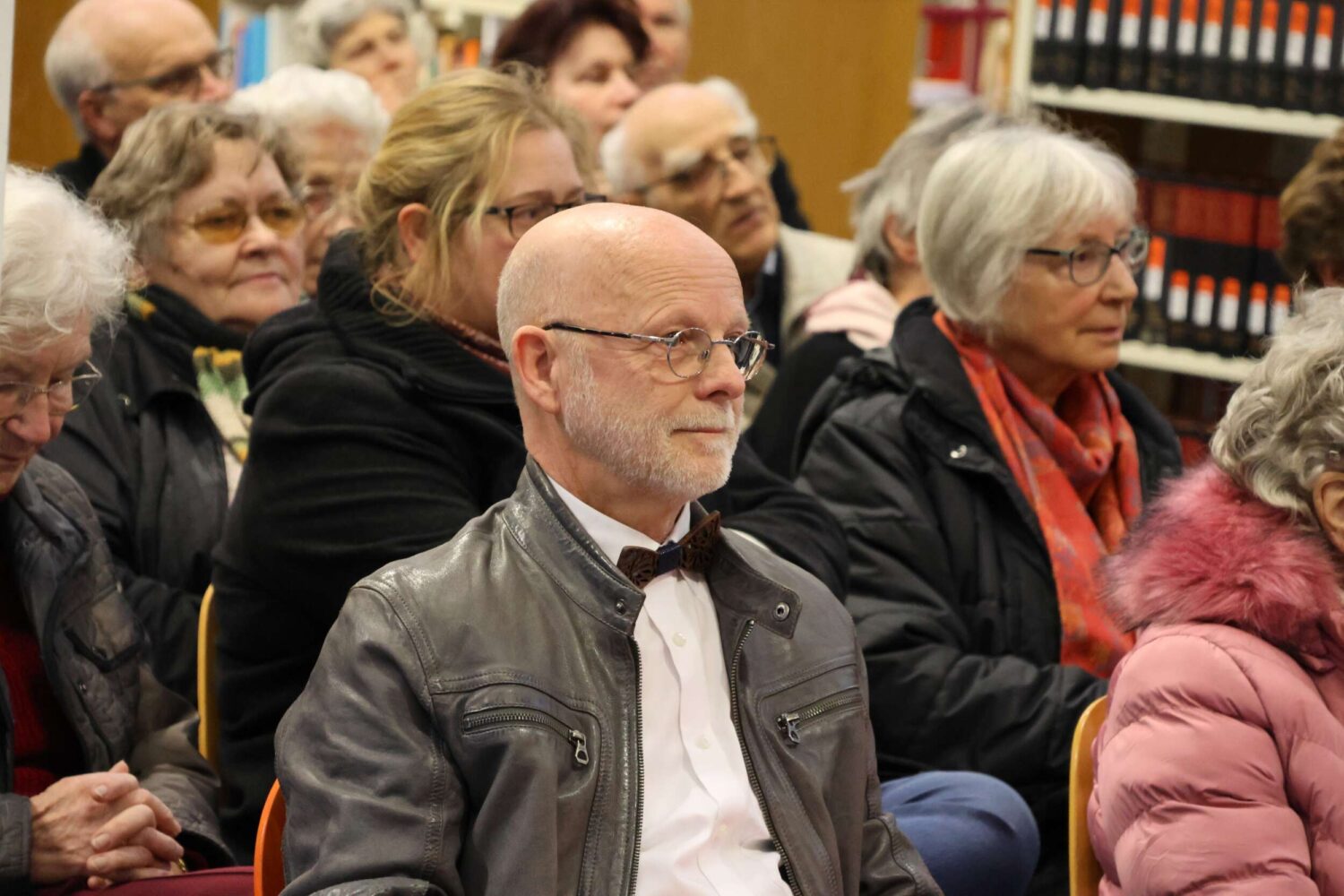
Image rights: FAU | Robert Antohi
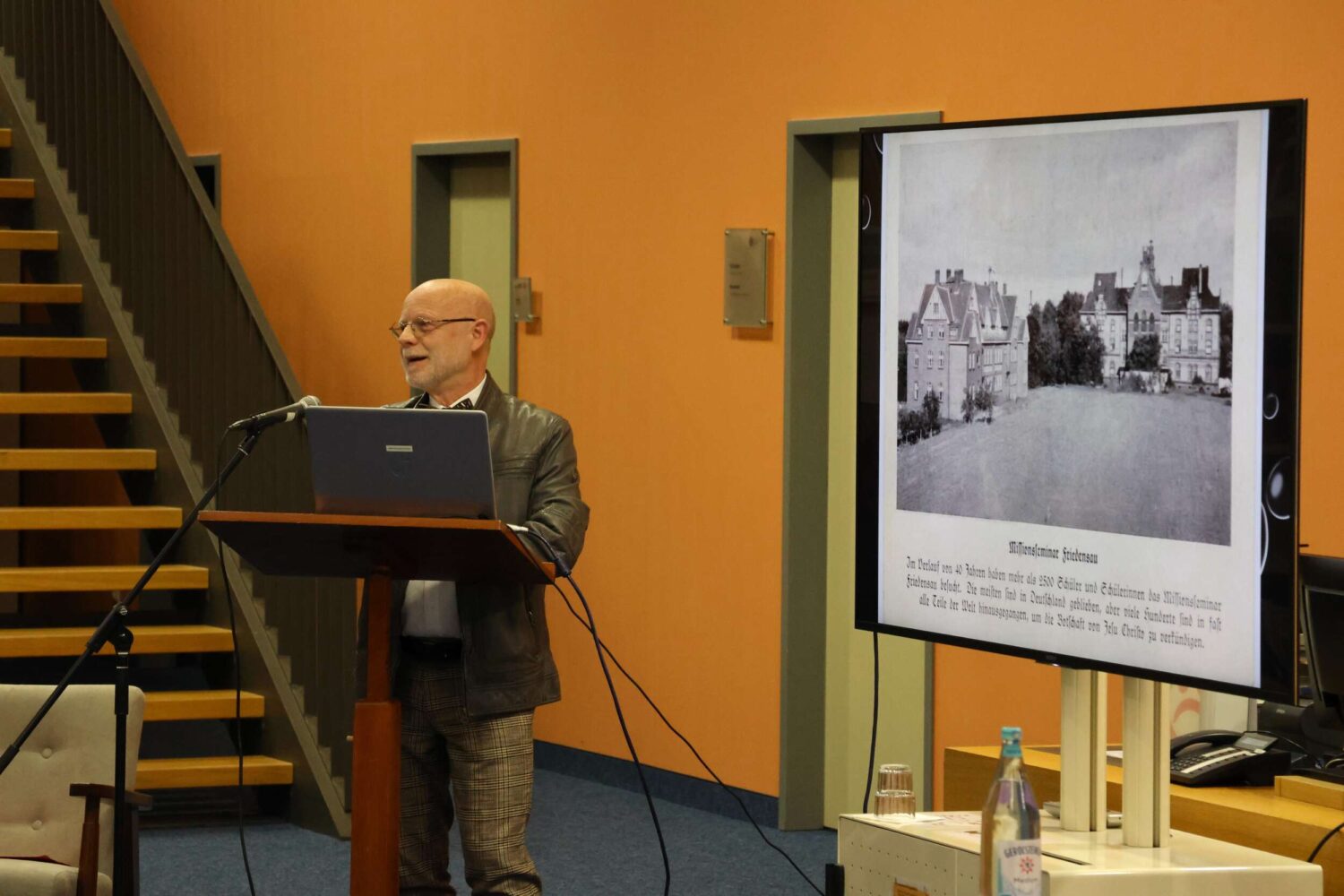
Image rights: FAU | Robert Antohi
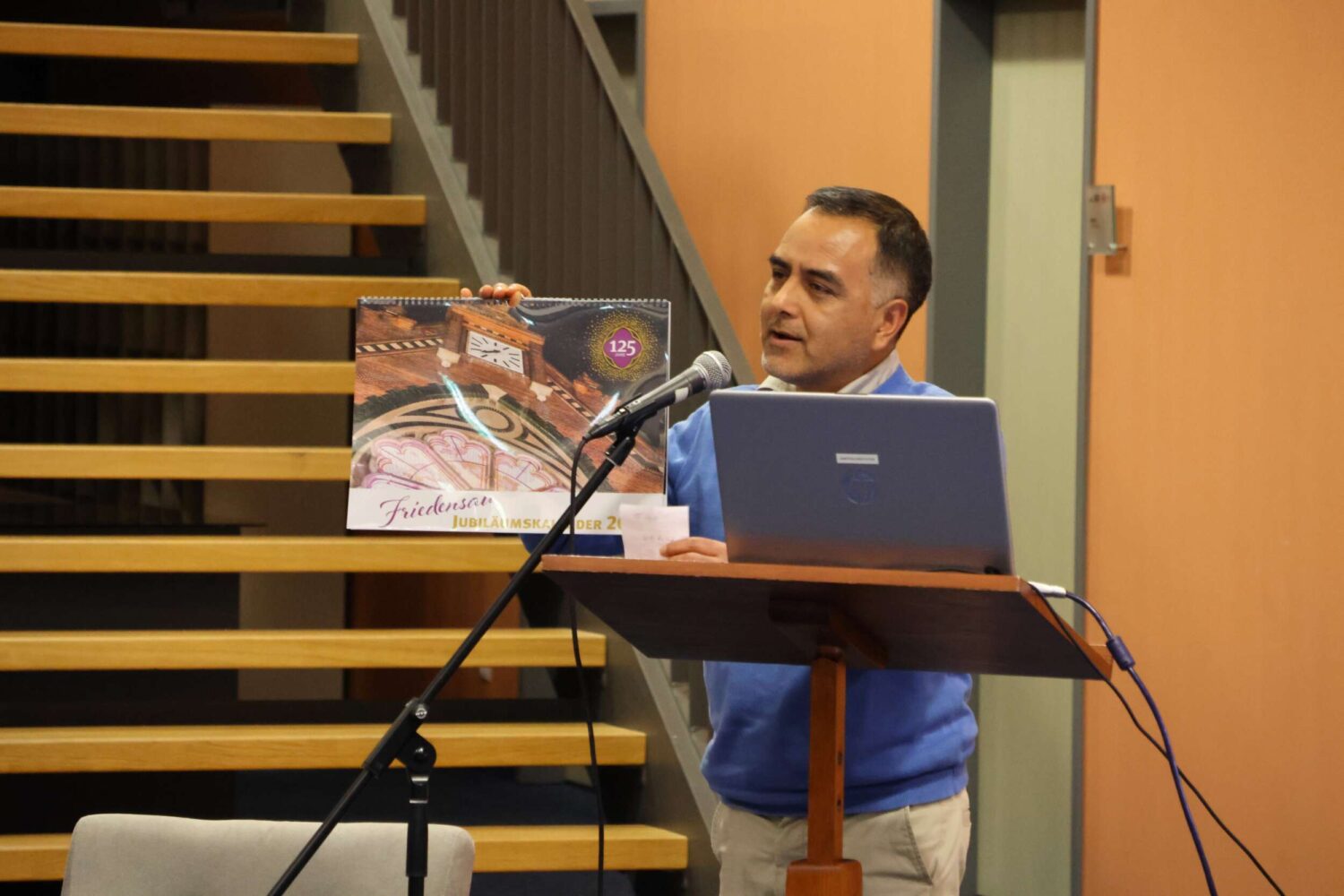
Image rights: FAU | Robert Antohi
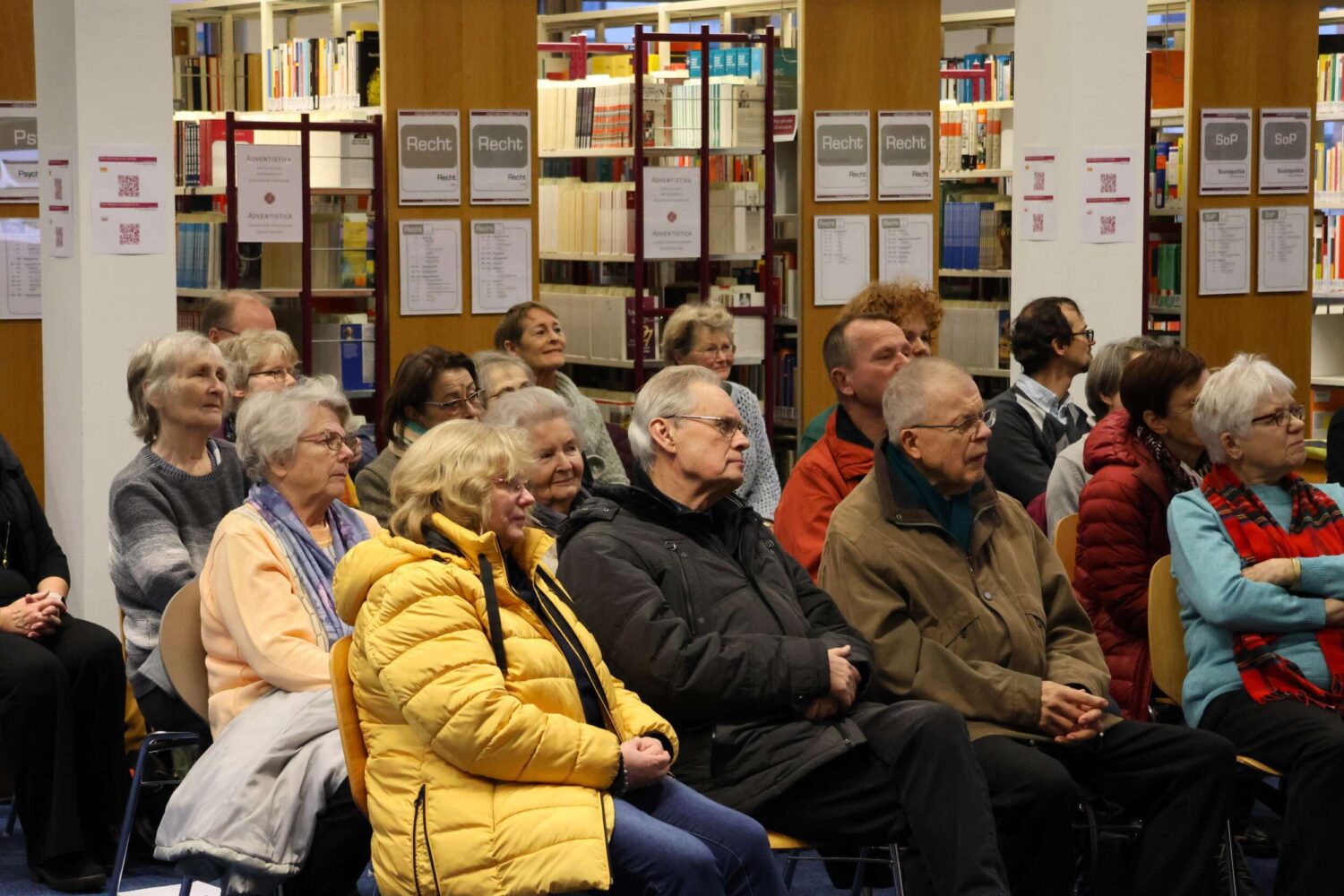
Image rights: FAU | Robert Antohi
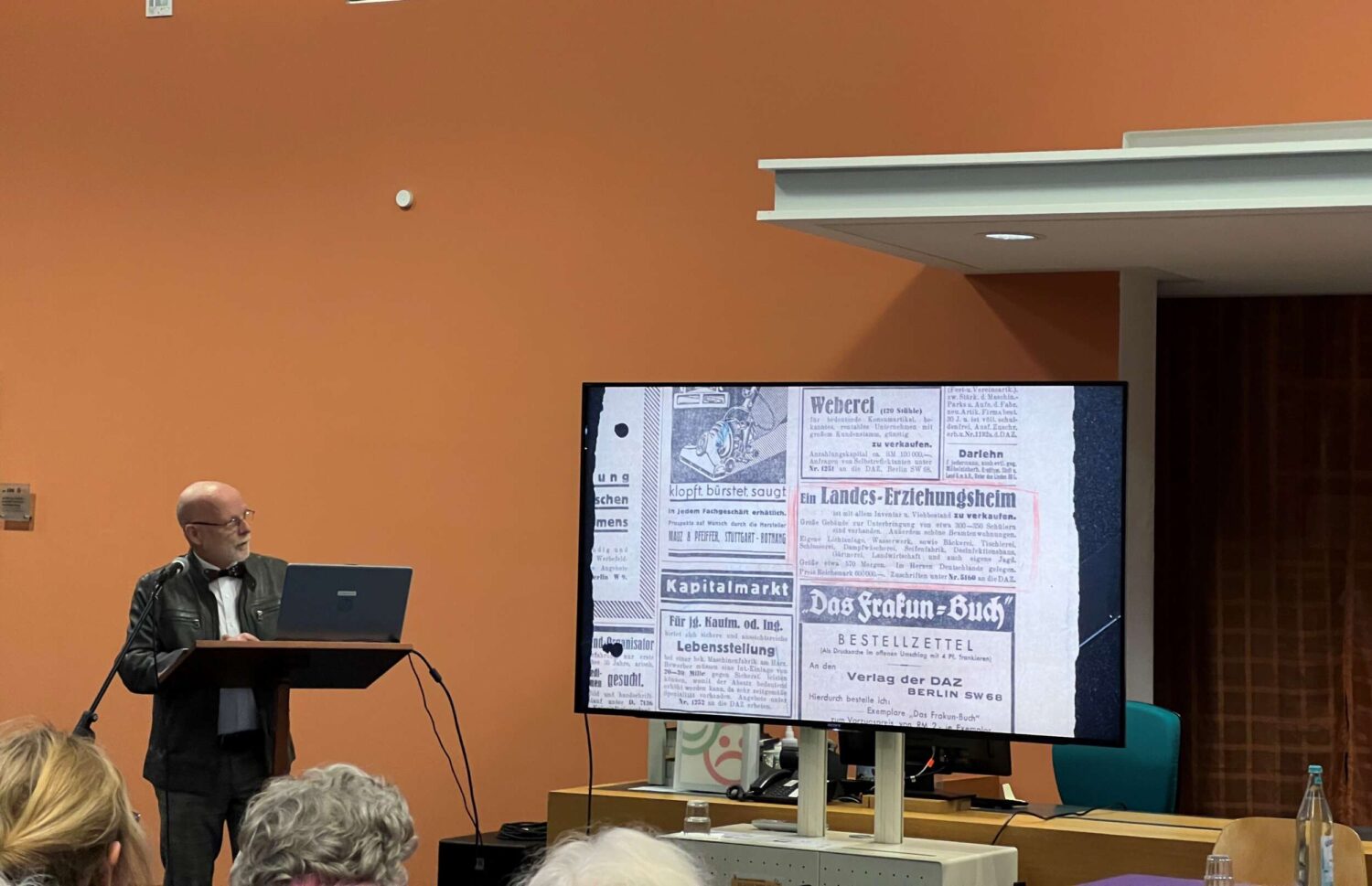
Image rights: FAU | Andrea Cramer

Image rights: FAU | Robert Antohi